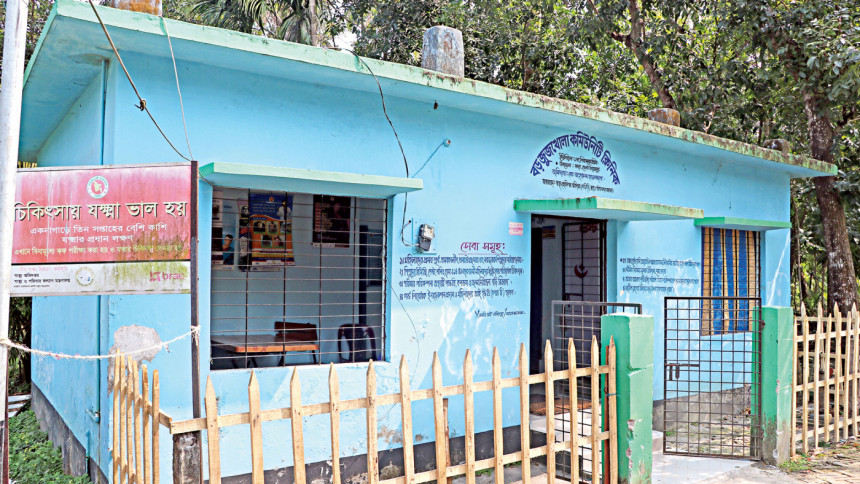Promoting Community Clinic services during COVID-19

The Government of Bangladesh launched the community clinic project to set up almost 18,000 clinics with an ambition of providing healthcare services to approximately 6,000 marginalised people through each community clinic at the grassroots level. Honourable Prime Minister of Bangladesh Sheikh Hasina inaugurated the first community clinic in Gopalganj district on April 26, 2000.
Along with primary healthcare services, 30 essentials types of medicines, free of cost, are being successfully provided from 13,861 community clinics to date. Since 2009, over one billion rural people visited the community clinics, including more than 85,000 normal deliveries being conducted there.
Among the service recipients, over 23.2 million urgent and complicated patients were referred to higher facilities for better management. Moreover, Community Support Groups (CSGs) involving the beneficiaries have been encouraged to be established so that they can own this public-private partnership and make it successful.
In the weeks immediately after the pandemic spread in the country, and subsequent gross restriction of movement was imposed, the marginalised communities were at a risk of facing reduced access to all sorts of care, including healthcare. Among the vulnerable groups, especially health services for pregnant women and newborns has been at great risk.
In such a catastrophic situation, healthcare providers in the community clinics, namely, Community Health Care Providers (CHCPs) had continued their healthcare service, as well as, reporting their higher authorities regularly, with courage and dedication.
As a result, the number of patients has substantially been increased at the community clinics than previously. A recent study finding states that 98.4% of community clinics were reporting regularly to their higher authorities.
With the relentless effort of the government and development partners, the antenatal care coverage, attending a delivery by skilled birth attendants (SBAs) and delivery at a facility has been remarkably increased. This positive vibe is at risk of deceleration in the current COVID-19 pandemic.
Efforts from the mass media and the developing partners should be focused and enhanced in ensuring successfully functioning community clinics nationwide, so that the steady acceleration in the remarkable achievements do not get halted. Let us all work together hand in hand to the way of achieving the targeted indicators of Sustainable Development Goals (SDGs) and prove the success of Bangladesh to the world.
Dr Abdullahel Amaan is a Resident at the Department of Neonatology, Bangabandhu Sheikh Mujib Medical University, Bangladesh.
Email: abdullahelamaan@gmail.com
Dr Khainoor Zahan is a Deputy Director at the Bangladesh National Nutrition Council (BNNC), Bangladesh.
Email: khainoorzahan@gmail.com


 For all latest news, follow The Daily Star's Google News channel.
For all latest news, follow The Daily Star's Google News channel. 



Comments